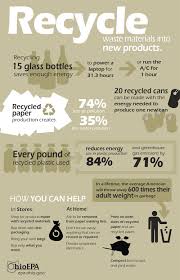
Every home generates both organic and inorganic waste and managing this waste on a daily basis calls for some planning as collection and disposal are integral parts of its management. If you collect waste, it needs to be disposed else it would lead to serious repercussions on health and other social problems.
In the home perspective waste or garbage is of three types: Organic waste, Toxic waste and Recyclable waste.
Organic waste Organic waste, or green waste, is organic material such as leftover food (both vegetarian and non-vegetarian), fruit and vegetable peels, garden and lawn clippings, egg shells, etc. These are also bio-degradable. About a third of the home waste produced is categorised as organic waste. This can easily be made into reusable, high quality compost if treated properly at home. On the other hand if this bio-degradable organic waste is dumped into landfill sites, it decays and in the process produces methane gas which is extremely harmful to the environment and may cause unpredictable explosions.
Toxic waste Toxic waste are old medicines, paints, chemicals, bulbs, spray cans, fertilizer and pesticide containers, batteries, shoe polish.
Recyclable waste Recyclable: paper, glass, metals, plastics. Toxic and recyclable wastes are also called inorganic waste. These are not biodegradable and one has to be careful in disposing it. Careless dumping of these materials in open grounds could contaminate the soil and cause serious damage to environment and to life.
There is a further category of waste called e-waste or Electronic waste. These are used electronic parts which, most certainly, are destined for reuse, resale, salvage, recycling or disposal. Unfortunately, there is no law to monitor and check the disposal of e-waste.
Electronic waste like CRTs, most certainly, contain contaminants such as lead, cadmium, brominated flame retardants and other hazardous chemicals which, if not scientifically disposed or recycled, poses great danger to the health of the workers involved in this exercise.
Home waste management involves the following processes: Collection, transport and disposal of waste Every day, garbage like kitchen waste, paper wrappers, bottles, both glass and plastic, is collected in the home. In the cities, very often you have the garbage collectors, appointed by the city corporation or other similar bodies, who either collect the garbage from your home or from designated bins. These are then transported to a central area from where the further process of disposal takes place. So far, so good; what happens when this collection does not happen? The garbage then accumulates in the house and unless it is disposed, it becomes a breeding ground for ants, cockroaches, mosquitoes and even rodents. Consequently, it could lead to many health issues, especially when there are young children in the house. Disposing the inorganic waste can be done at one’s convenience since it does not decay but not so with the organic waste. This brooks no delay.
So how does one go about managing it effectively?
1. Minimise the collection and accumulation of garbage by avoiding bringing in plastic bags. Don’t let garbage accumulate at home. Regular disposal will keep insects like cockroach, ants and flies away. These insects breed in garbage.
2. Use reusable cloth bags for your shopping.
3. Avoid bringing in goods that has multi-layered packaging. Readymade garments get packed in many layers of plastic and plastic coated wrappings. Once you have purchased the item try and remove all the packing in the store itself, unless it is a gift item.
4. Segregate the garbage into organic and inorganic collection bins. Do not put them in the same bin.
5. Try composting the organic garbage. The internet can help you with ideas on how to compost. This will not only help in the disposal but also get you valuable compost for your kitchen garden, thus saving you some money.
6. Lastly, give up the habit of hoarding. Most of us are prone to this. Donate you old clothes and utensils to orphanages or other institutions that may be in need of this. But make sure that you give away only those items that are usable, and do not donate torn clothes or badly damaged utensils. These can go to the raddiwala. If every house conscientiously disposes the garbage they collect, this stinking problem can be safely solved. It is also incumbent on the individual to create awareness in others in the neighbourhood to follow such appropriate methods to keep each living unit, building and the neighbourhood clean.






